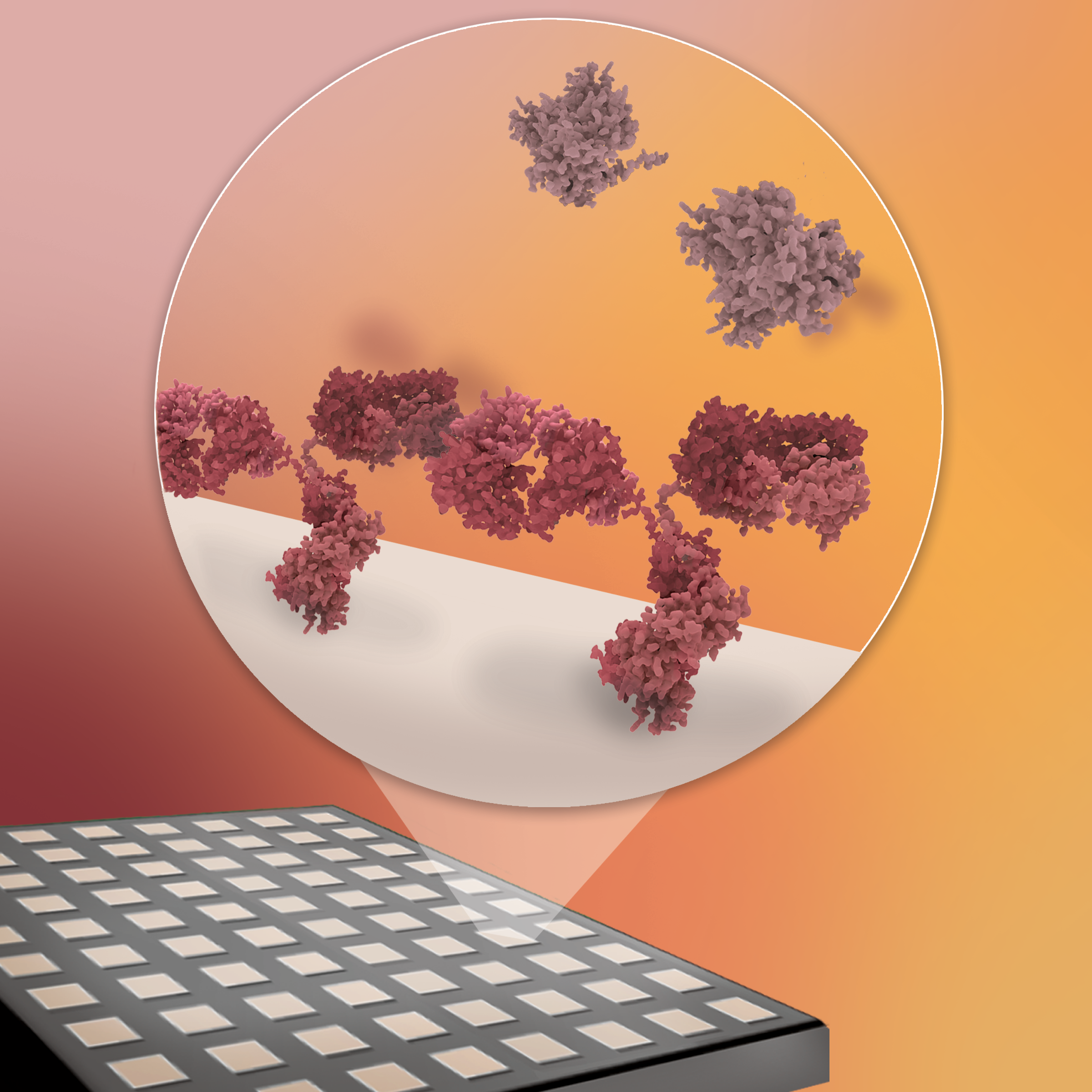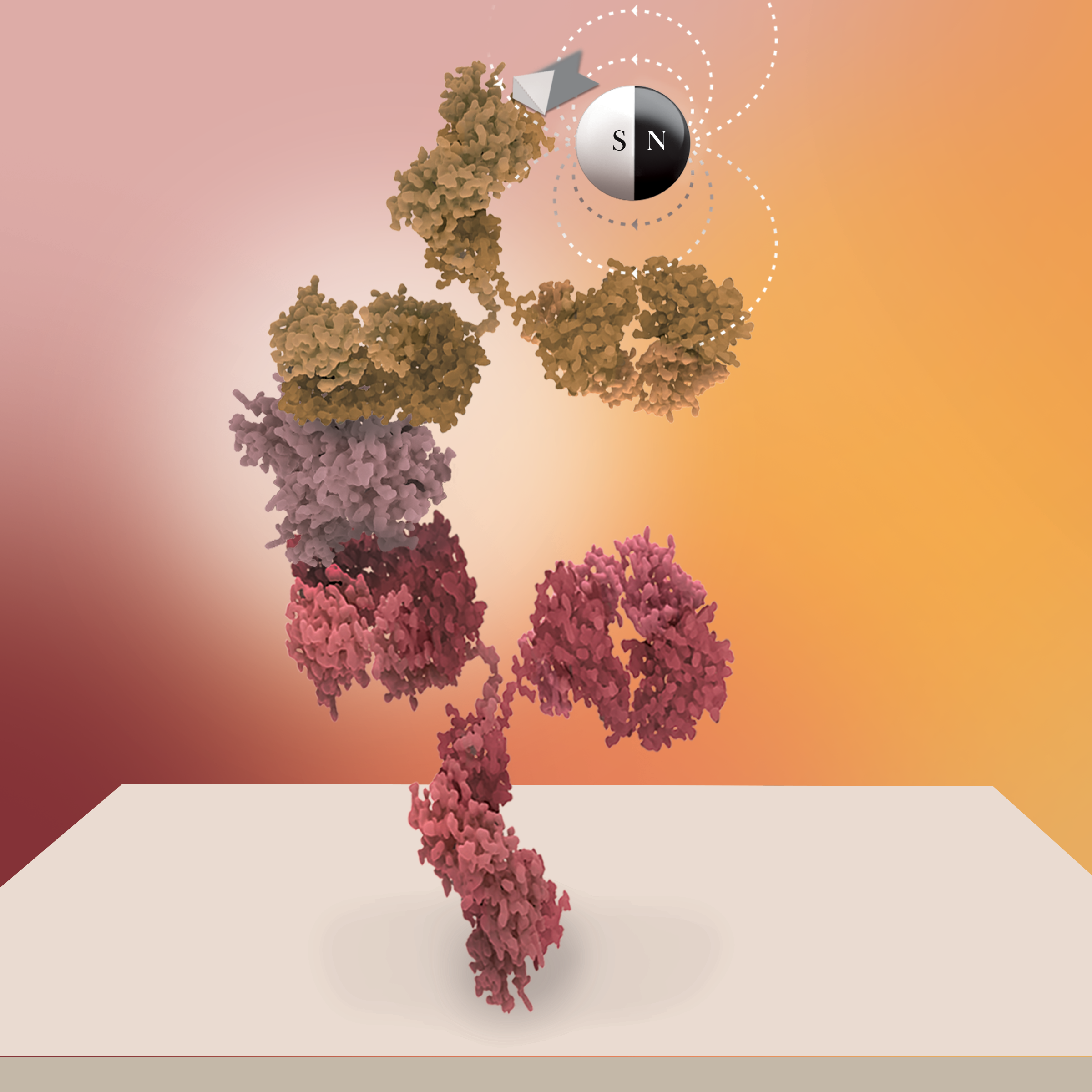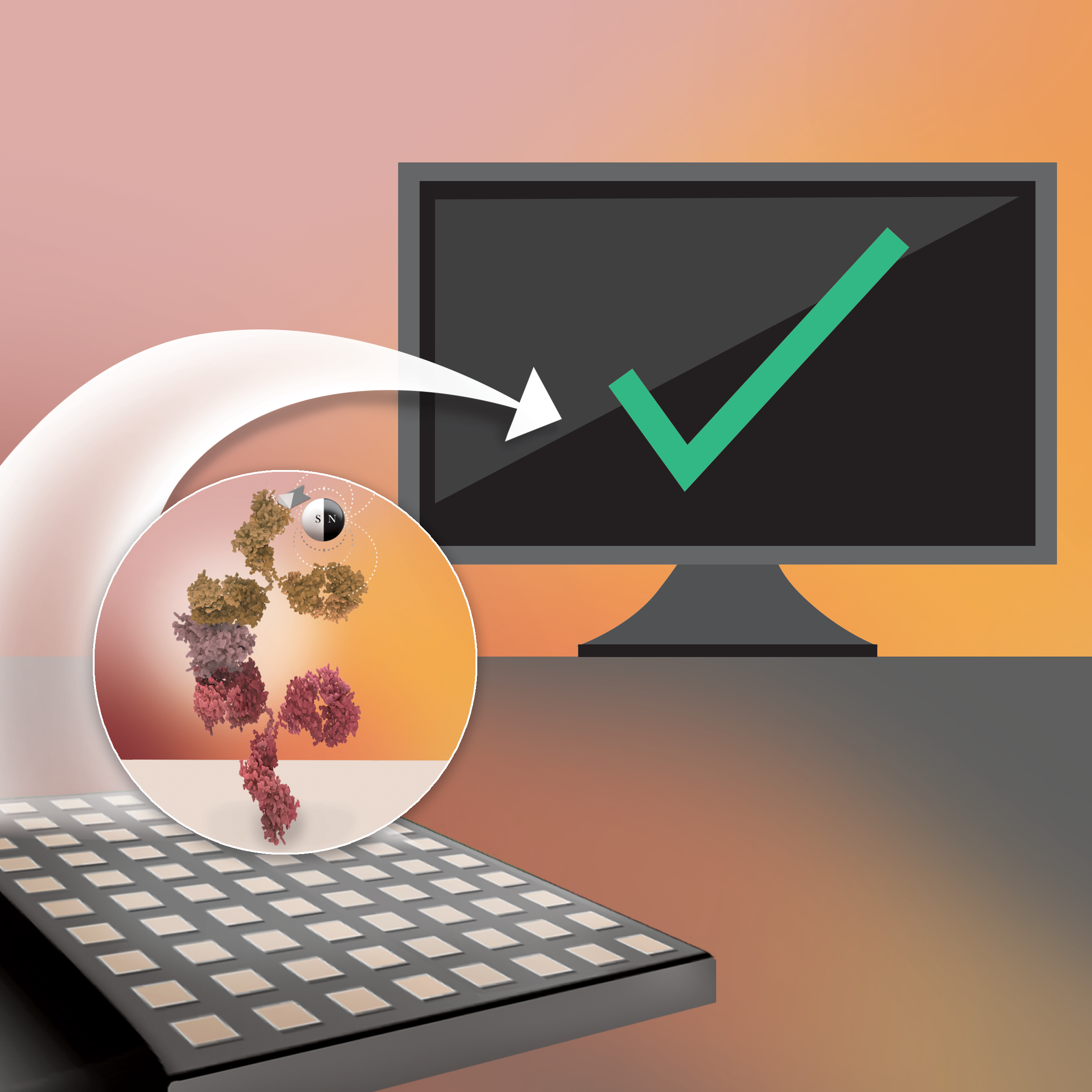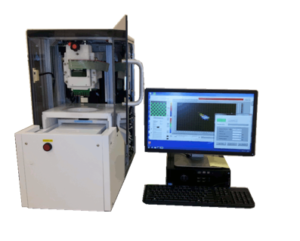Building on magnetic read head technology from the hard drive industry, MagArray has designed a magnetic nanosensor that is highly responsive to local magnetic fields. The result is an exceptionally robust tool for clinical analysis.
Through the innovative application of magnetic nanosensors, MagArray technology brings new levels of sensitivity and ease of use to immunoassays by combining traditional immunoassay development principles with integrated circuit design and nanofabrication.
Once labeled with magnetic nanoparticles, biomolecules such as disease biomarkers can be immediately detected by the MagArray system.
4 Simple Steps for Analyte Detection Using the MagArray System

Step 1
Target molecules in the sample bind to sensors on the surface of the specially designed MagArray chip.

Step 2
A labeled "detection antibody" that is specific to the target molecule being measured is introduced.

Step 3
Magnetic nanoparticles are introduced that bind to the labeled detection antibody, forming "sandwich" structures.

Step 4
The sensors in the MagArray chip detect the magnetic field generated by the bound magnetic nanoparticles and determine the presence of the target molecule in the sample.
The MagArray Advantage
Our technology overcomes limitations of other common clinical analysis technologies to deliver distinct advantages:

- Less downtime and fewer errors
- A rugged, reliable design that is easy to use and virtually maintenance free:
- No optics, meaning no alignment or calibration of lasers, mirrors, detectors, etc.
- No fluidics, meaning no pumps, system fluids, valves, tubing, leaks, etc.
- No system waste liquids
- No dangerous materials or reagents
- No easily broken probes, tips, or detection chambers
- Automation
- Fast read-outs within minutes of adding the magnetic nanoparticles
- Bar-code system to minimize errors
- Hands-free incubation
- Easy maintenance: simply wipe up spills and ensure the printed circuit board (PCB) assembly mount is in its home position
- Simple reagent preparation: thaw/equilibrate to room temperature and dilute
- Simple plate reagent loading that can use automatic plate loading of the bulk reagents
- A detection technology can be applied to all clinical assay formats: immunoassays for proteins, antibodies, and small molecules; hybridization-based assays for DNA, RNA, etc.
- No need to remove unbound detector reagent in the assay process: rapid analyte detection that is free of bulk detector background signal therefore no washes are needed
- High analytical sensitivity and specificity that push to the full capabilities of the assay components reaching the limits of antibody and antigen binding affinities, nucleic acid hybridization strengths, etc.
- Multiplexed panels: one assay process providing multiple analyte answers
- Automation
- Fast read-outs within minutes of adding the magnetic nanoparticles
- Bar-code system to minimize errors
- Hands-free incubation